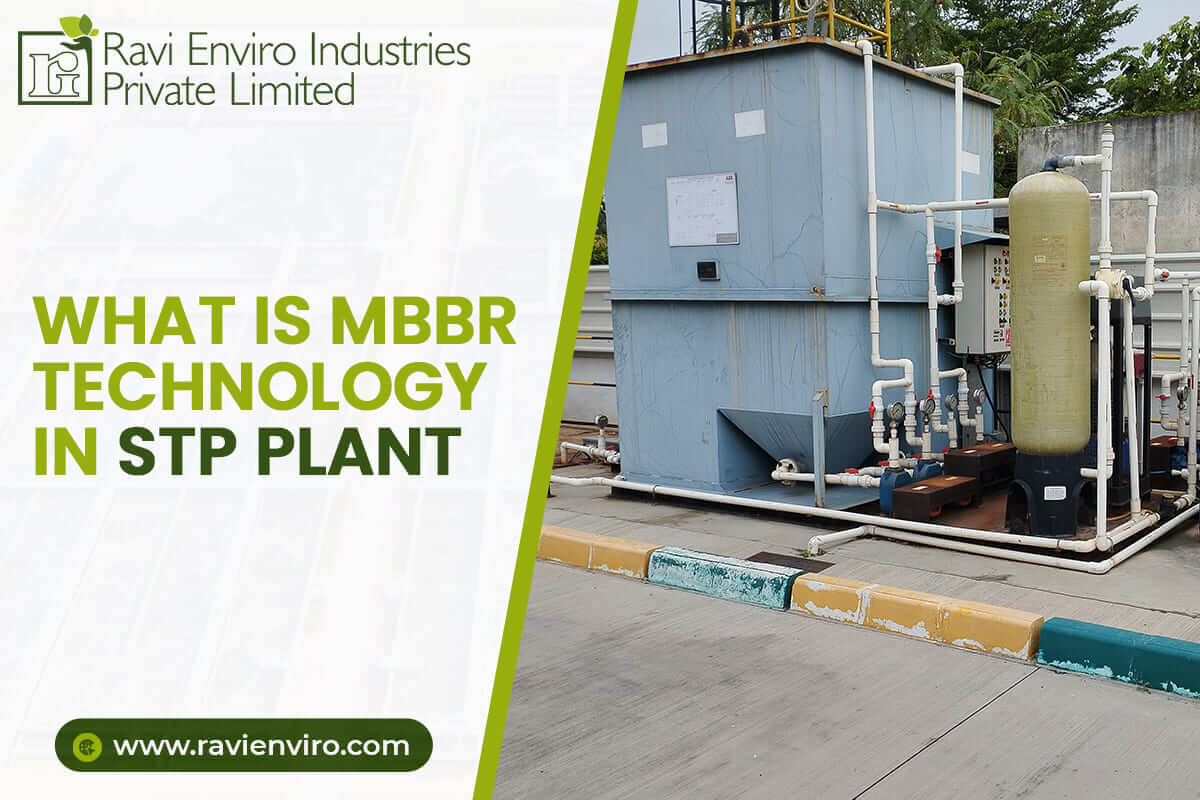
- Sep 24, 2024
- Ravi Enviro
- STP
- 0 Comments
Moving Bed Biofilm Reactor (MBBR) technology is a biological process that is used to treat wastewater. The MBBR technology is renowned for its efficiency, flexibility, and convenience. It significantly increases the capacity and efficiency of sewage treatment plants with low energy consumption. Let’s dive deeper into the MBBR technology in STP and the role it plays in water treatment.
What is MBBR in STP?
The MBBR meaning in STP is Moving Bed Biofilm Reactor in sewage treatment plant. It is a wastewater treatment process that is used in WWTP plants. Sewage water generated from different sources is treated with a multiple-stage wastewater treatment plant, in which MBBR is used. The MBBR technology is an economical solution in terms of Capital as well as Operating Costs.
What is MBBR Technology?
MBBR technology is a biological treatment of an STP plant. MBBR media provides the surface area in the aeration system for bacteria to develop. This addition of surface area helps to reduce the aeration tank size and ultimately saves space and cost. Ravi Enviro Industries Private Limited is one of the most renowned STP manufacturers in India. We design and manufacture STP plants backed with MBBR technology for an economic wastewater treatment solution. For more information about our STP plants, call us.
What is MBBR Process?
The MBBR process provides more surface area for a biological process in which microbes or nematodes are used to decompose the organic matter in the wastewater. These microbes consume the organic matter and they can be easily filtered out. The biological wastewater treatment is extremely efficient and can be used separately or in a process.
Working of MBBR System in Sewage Treatment Plant
The MBBR-backed system comprises an activated sludge aeration system in which the sludge is recycled and vested as required. This MBBR media consists of an adequately large surface equipped for contact with air, water, and bacteria.
Components Used in MBBR Wastewater Treatment Process
Basin: The MBBR process takes place in the basin or reactor or aeration tank. It is made of polypropylene and provides a surface for microbes development. The size of the basin depends on the filtration needs. Wastewater enters the basin for further MBBR processing. These aeration tanks are open from the top, allowing water to be exposed to make an aerobic filtration process.
Media: The MBBR tank consists of many small circulated-shaped plastic components occupying the space in tanks and offering surface area for biofilm.
Aeration Grid: An important component that gives air (oxygen) for bacteria to sustain and grow and also allows the media to move effectively is the aeration grid. This device is located at the bottom of the reactor tank. It helps to keep the media moving so they can come in contact with the contaminants, decompose them, and get more oxygen into the tank.
Sieve: When considering an MBBR system, one might think about how the media stays in the tank instead of leaving it. A sieve is a mesh material that allows water to pass through but allows the plastic media to stay in the basin.
MBBR Technology Advantages
- It runs on minimal maintenance costs
- It happens naturally and is highly stable with organic materials.
- It has a compact design that needs less space
- It is resilient to toxic shock
- It generates low sludge
MBBR Technology Disadvantages
- It needs manual monitoring
- It can attract insects
STP Plant with the Best MBBR System for Your Application
Ravi Enviro Industries Private Limited is a renowned water treatment plant manufacturer in India. Our STP plants are tailored with the latest technology, like MBBR, SBR, and UASB, to cater to your diverse water treatment needs. Our team of experts has extensive experience in working with the best MBBR technology, customized to fit the needs of wastewater treatment facilities. Trust REIPL for the best modern wastewater treatment plants and equipment. To learn more, request a quote.
Also check:- Diverse Types of STP Plants



